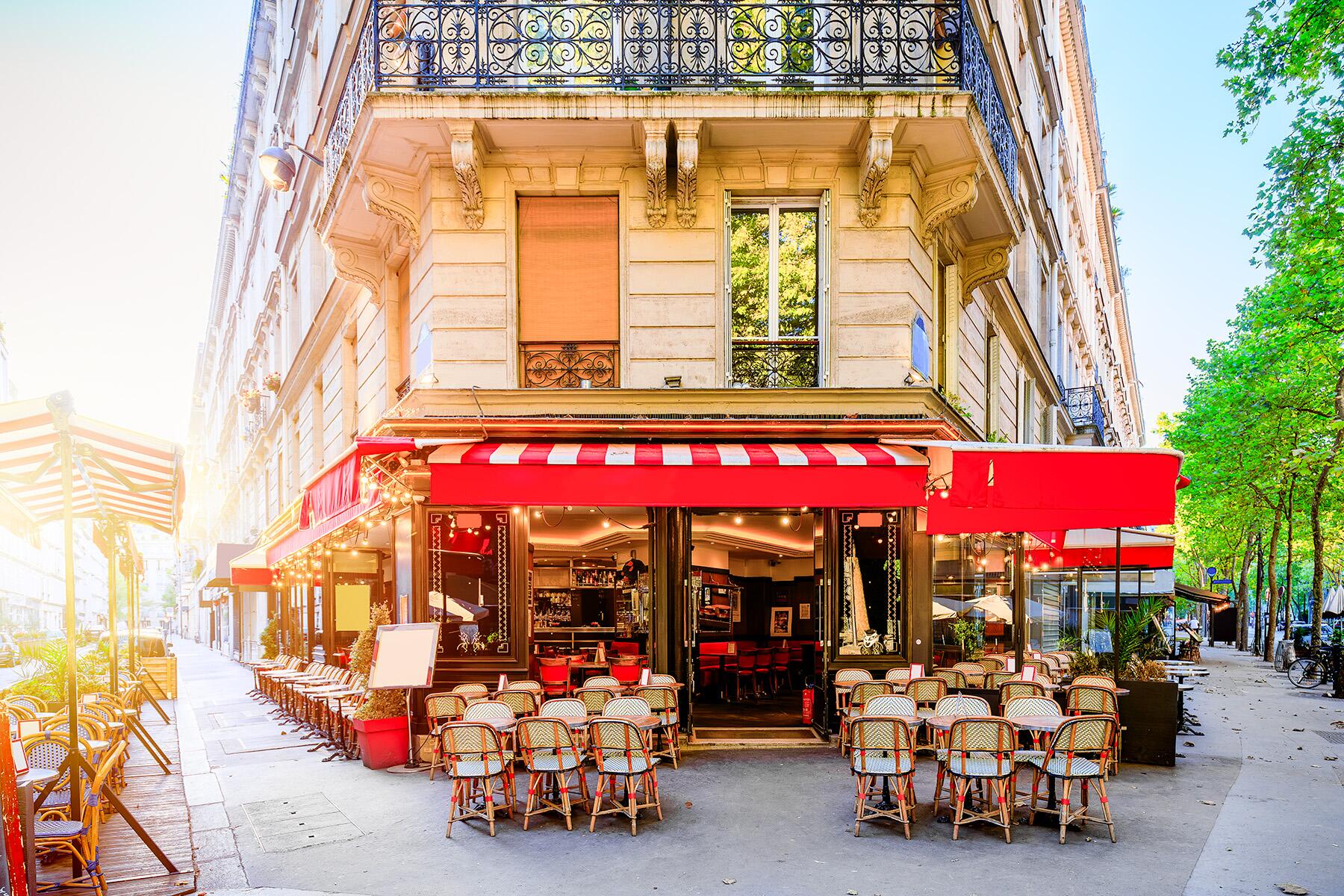There’s just something about 1920s Paris that captivates travelers.
Paris’ history is marked by its intelligentsia, with writers from Victor Hugo to Molière, Jean-Paul Sartre to Simone de Beauvoir still haunting its streets, parks, and cafés. But there is perhaps no literary icon whose Paris is more emulated—particularly by expat visitors—than Ernest Hemingway.
Sparse of prose and generous with martinis, Hemingway moved to Paris in 1921 with his first wife, Hadley, and after briefly leaving in 1923 so that their son could be born in North America, they returned and remained in France until 1928. During this period, Hemingway moved away from his job as a reporter for the Toronto Daily Star to pen many of his beloved short stories, as well as The Sun Also Rises.
When Hemingway’s marriage to Hadley ended, so did his time in Paris, though the city was never far from his mind. He would return following the end of World War II. In the 1950s, he wrote a memoir of his near-decade in the French capital, A Moveable Feast, a reference to a longer quote that sums up his opinion of Paris quite deftly: “If you are lucky enough to have lived in Paris as a young man, then wherever you go for the rest of your life, it stays with you, for Paris is a moveable feast.”
A century after Hemingway lived in Paris, his version of the feast is still within reach. If you want to haunt his footsteps for a day in the French capital, here’s where to go, eat, and drink.
Recommended Fodor’s Video
Related: Oscar Wilde’s Final Years Were Spent at These Historic Places in Paris
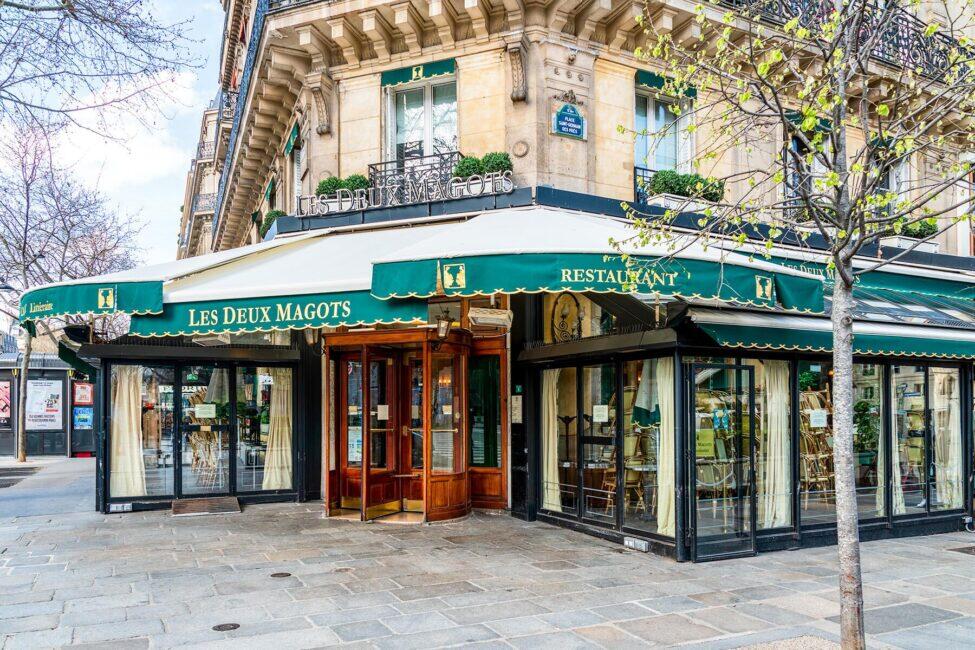
First Stop: Breakfast in the Latin Quarter
Hemingway spent his early years in Paris living in the Latin Quarter, the heart of Paris’ oldest district. First settled by the Parisii Gauls before being conquered by the Romans, the Latin Quarter is a picturesque spot to spend your first morning.
Begin at the apartment where he lived with Hadley, located on the third floor of a building at 74 rue du Cardinal Lemoine. Today, a plaque honoring him is still visible below the apartment, alluding to the time when he was “very poor and very happy.”
While living here, Hemingway also rented a second room, just around the corner, at 39 rue Descartes, which served as his office and writing space. You can take his morning walk through the Place de la Contrescarpe (backtracking to bypass, if you like, the house where James Joyce wrote Ulysses at 71bis rue du Cardinal Lemoine) on your way to find breakfast.
Snag a viennoiserie at L’Essentiel (2 rue Mouffetard), which Hem decidedly did not frequent but is an award-winning organic bakery with loads of choice, or head down rue Mouffetard to pick up some clementines from one of the fruit sellers that dot this cobbled street—a favorite of Hemingway’s, particularly when he was suffering from writer’s block.
“Sometimes,” he writes in A Moveable Feast, “when I was starting a new story, and I could not get it going, I would sit in front of the fire and squeeze the peel of the little oranges into the edge of the flame and watch the sputter of blue that they made. I would stand and look out over the roofs of Paris and think, ‘Do not worry. You have always written before, and you will write now. All you have to do is write one true sentence. Write the truest sentence that you know.’ So finally, I would write one true sentence and then go on from there.”
Since you can’t actually write where Hemingway did, consider taking the 12-minute walk over to the Jardins de Luxembourg to glean inspiration from this lush public park Hemingway frequently passed through on his way to Gertrude Stein’s apartment at 27 rue de Fleurus. When Hemingway was particularly low on money, he would hunt pigeons in the garden, hiding them in his son’s pram before taking them home to roast them for his dinner.
If it’s rainy, grab a coffee instead at nearby Les Deux Magots, which has long served as a meeting place for the Parisian intelligentsia and notably appears in The Sun Also Rises. Or you could wander over to the café at Shakespeare and Company, which was added to the illustrious bookshop in 2015.
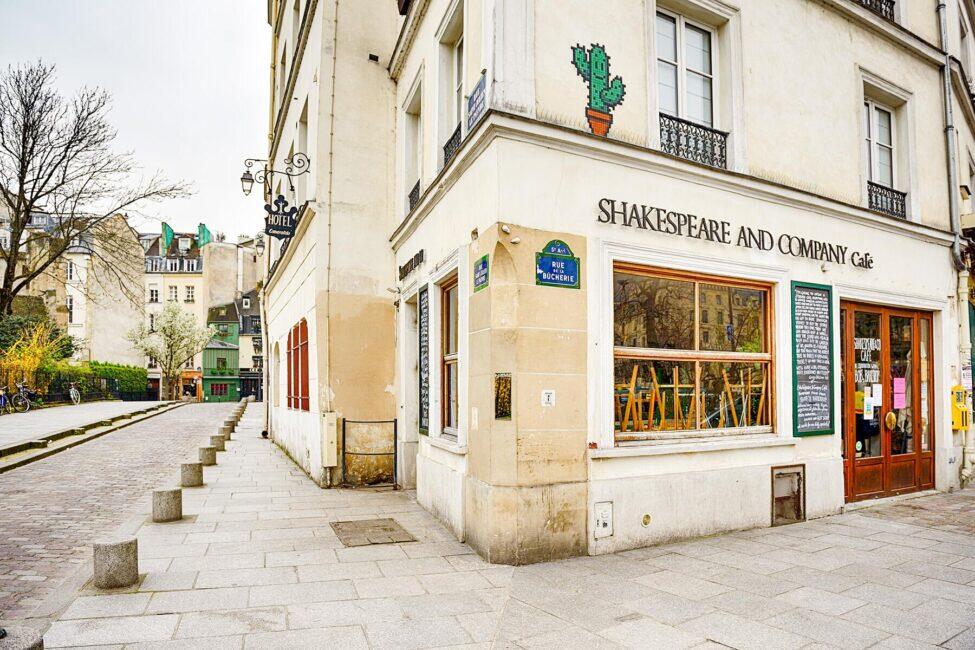
Sorry to burst your bubble, but despite Hemingway being a mainstay of Shakespeare and Co., this is not the location he frequented. The original was opened in 1919 by Sylvia Beach, who bankrolled James Joyce and convinced Hemingway to leave journalism behind for the world of fiction. Her shop would have been on 12 rue de l’Odéon, in the heart of what Hem termed “Odeonia,” but it closed in 1940.
While the current Shakespeare and Company, which opened in 1951, has no link to the original other than in name, it’s definitely worth spending a bit of time at this homage to Beach’s to peruse the offerings and linger in the upstairs reading room with a view of the Seine.
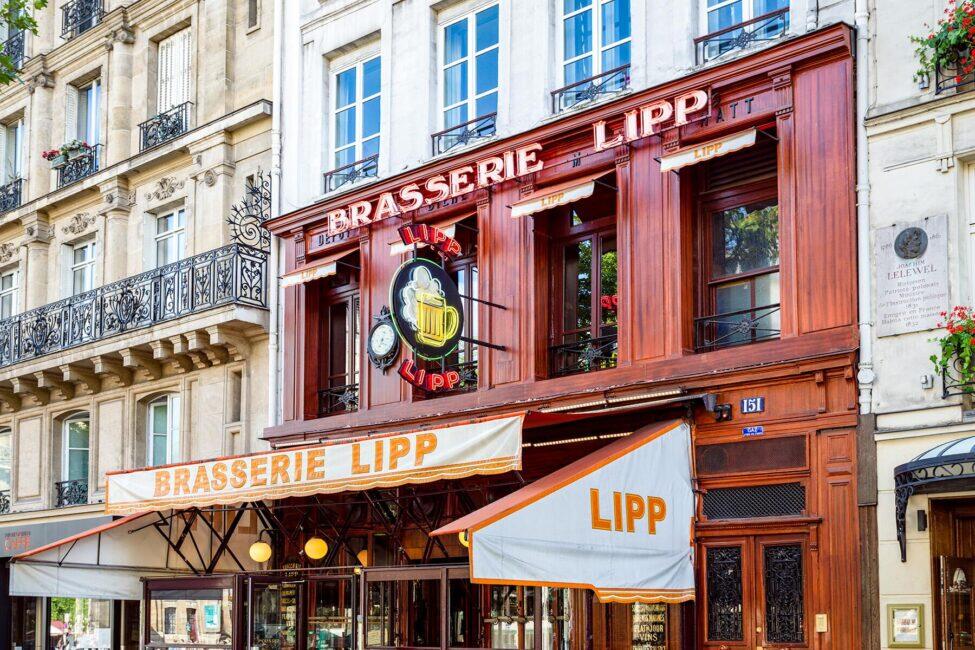
Lunch and the Louvre
Hemingway had a few favorites for lunch, including Brasserie Lipp, where he would often enjoy cold beer and potatoes in oil. Today, the Brasserie Lipp menu still includes herring with potatoes in oil, not to mention other bistro classics like escargots, roast chicken, and sole meunière.
Once your belly is full, wander across the river to the Louvre, bypassing the Hotel d’Angleterre, Hem’s first port of call when he arrived in Paris in 1921. (He stayed in room 14.)
Stroll past the bouquinnistes, which Hemingway loved to peruse for English-language books, and cross the river to reach the Louvre, which features in A Moveable Feast after a particularly uncomfortable lunch between Hemingway and a distraught F. Scott Fitzgerald. According to Hemingway’s account, Fitzgerald was perturbed by his wife Zelda’s assertions of his profound lack in what both he and Hemingway term “a matter of measurements.” Hemingway gamely checks out his friend’s…ahem…size…in the restroom before reassuring and escorting him to the Louvre sculpture gardens for a point of comparison. (Hem was kind—most of the classical sculptures are also reasonably diminutive, a testament to the Greek ideal at the time.)
INSIDER TIPIf you just want to see the sculptures without venturing into the maze-like museum, they’re visible through the windows in the Passage du Richelieu, linking the glass pyramid to the rue de Rivoli.
An Afternoon of Misery, an Evening of Joviality
Two spots are more morose on the Hemingway Paris trail. The first is Père Lachaise Cemetery, where author, poet, and feminist Gertrude Stein was laid to rest with her long-time partner Alice B. Toklas. Stein was a mentor to Hemingway and his fellow Lost Generation writers and even coined the term to describe them.
Macabre as it may seem, no shortage of visitors come to explore the 110-acre cemetery first built at the behest of Napoleon, paying visits to the graves of such illustrious former Parisians as Molière, Marcel Proust, and Jim Morrison.
INSIDER TIPBe sure to download a map to help you get around.
Next up, while the Gare de Lyon may be Paris’ most beautiful, for Hemingway, it was suffused with loss: This is where Hadley lost a suitcase filled with his manuscripts on her way to meet him in Switzerland in 1922.
Nurse your sorrows at one of Hemingway’s favorite bars, of which he had several: Harry’s Bar (temporarily closed) near the Opéra Garnier was originally built in New York before being dismantled and shipped to Paris; it claims to have invented the Bloody Mary. In the 1st arrondissement, meanwhile, Hemingway ostensibly liberated the cozy, 25-seat bar bearing his name from the Nazis and followed his valiant but ultimately redundant efforts with 51 martinis.
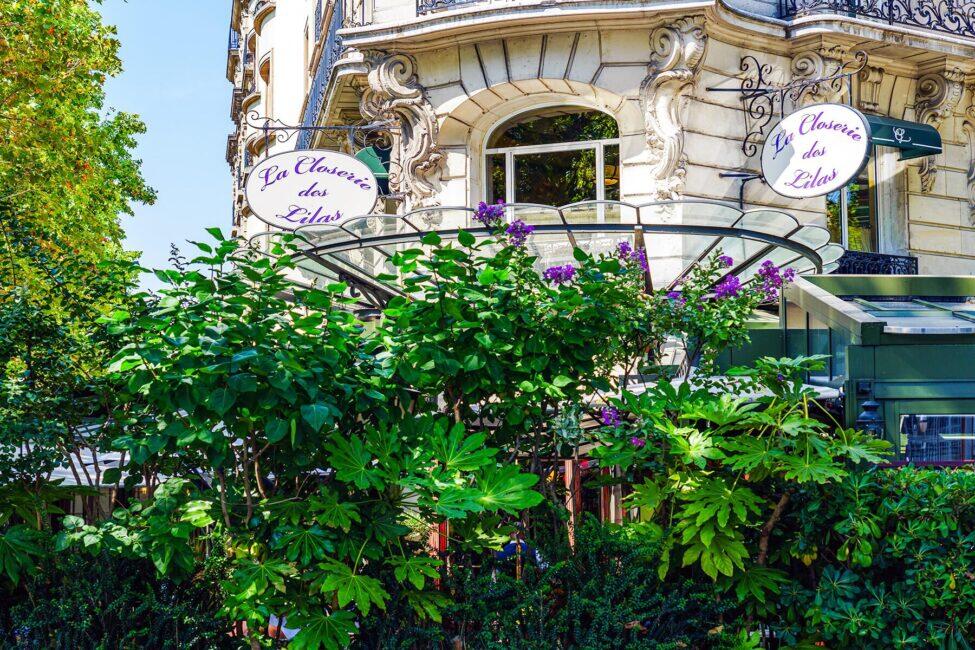
At this point, you’ll definitely be needing some dinner; where better than one of Hem’s favorite classic French restaurants? Closerie des Lilas was located near Hemingway’s second Parisian residence in Montparnasse. It was beloved among Paris’ literati and was one of Hemingway’s favorite places to write. It was here that he penned most of The Sun Also Rises and also where he read Fitzgerald’s The Great Gatsby for the first time.
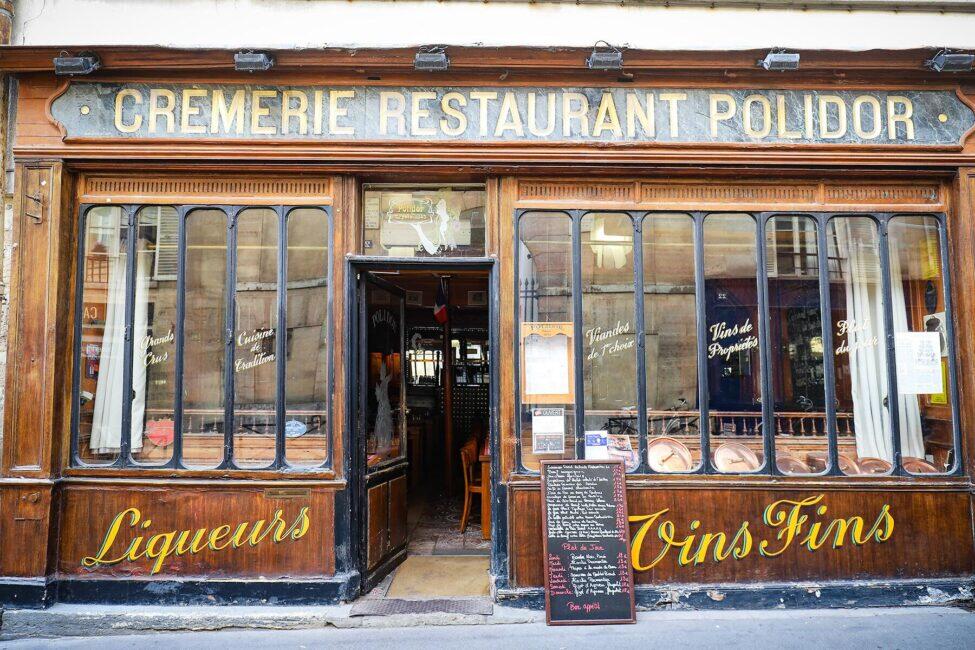
Back in the Latin Quarter, Polidor was another favorite of Hemingway’s that remains justly famous for its beef bourguignon and tarte tatin. It’s no surprise this is where Midnight in Paris was filmed, with Corey Stoll standing in for Hemingway. The dining room remains largely unchanged today and is perhaps the perfect place to await the arrival of Hemingway’s ghost.
Related: The Best Things to Do in Paris



